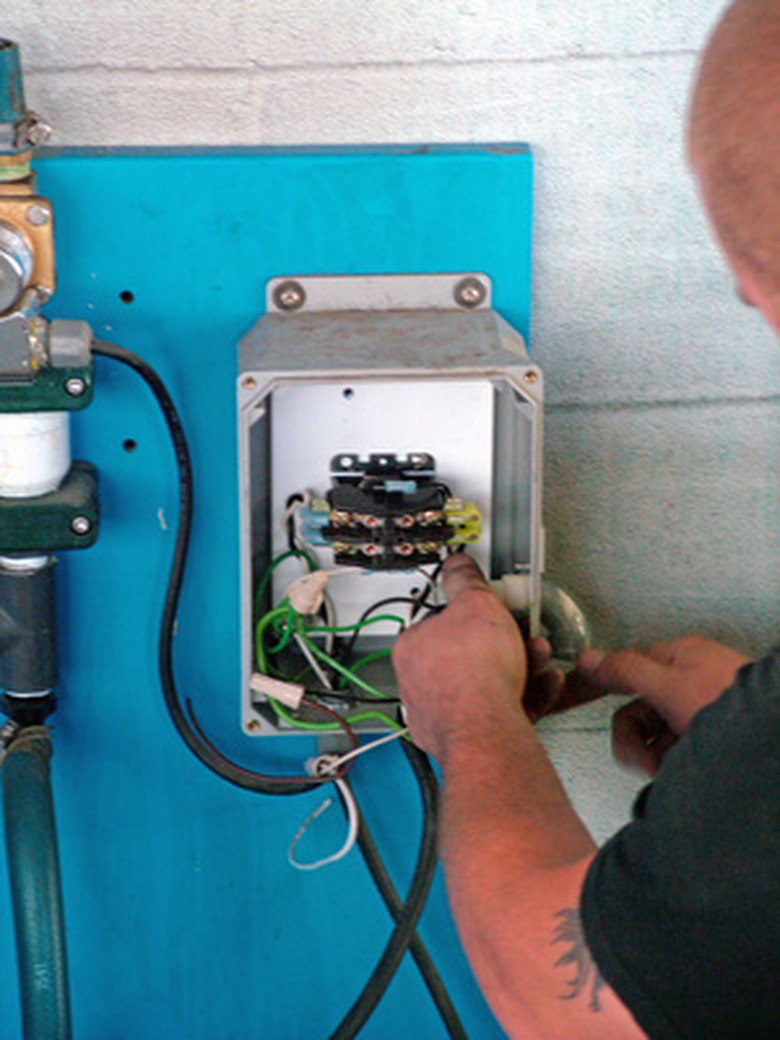How To Calculate A Breaker Panel Load
In electrical engineering, a circuit consists of a voltage source and a load, i.e. the part of the circuit that draws power from the source. When speaking about a building's electrical panel, the load is comprised of the dozen or so "branch" circuits leading from the panel to various parts of the building. In the United States, alternating current (AC) electricity is delivered to residences at a constant level of 240 volts. However, because a breaker panel is split into two main columns or "buses," the effective voltage is 120 volts. Since the voltage is constant, the "load" on the panel is proportional to the amount of current (in amperes or "amps") drawn from the appliances, which are attached to wires running back to the individual circuit breakers within the panel.
To calculate the total load on the breaker panel, you simply need to add together the amperage ratings from each circuit breaker, and then multiply that sum by 120 volts.
Step 1
Open the door to your breaker panel.
Step 2
Determine the amperage rating for each circuit breaker. The amperage rating is typically an integer between 15 and 50 (although it can be higher) followed by a capital "A." The rating will be printed on the breaker's Reset switch.
Step 3
Add all the ratings you determined in Step 2.
Step 4
Multiply the sum from Step 3 by 0.8. To protect circuits from power surges, electricians will generally use a breaker with an amperage rating 25 percent higher than the actual load created by the appliances attached. By multiplying by 0.8, you are correcting for this safety feature.
Step 5
Multiply the result from Step 4 by 120 volts. This will give you the total breaker panel load, in volt-ampere (VA) units.
